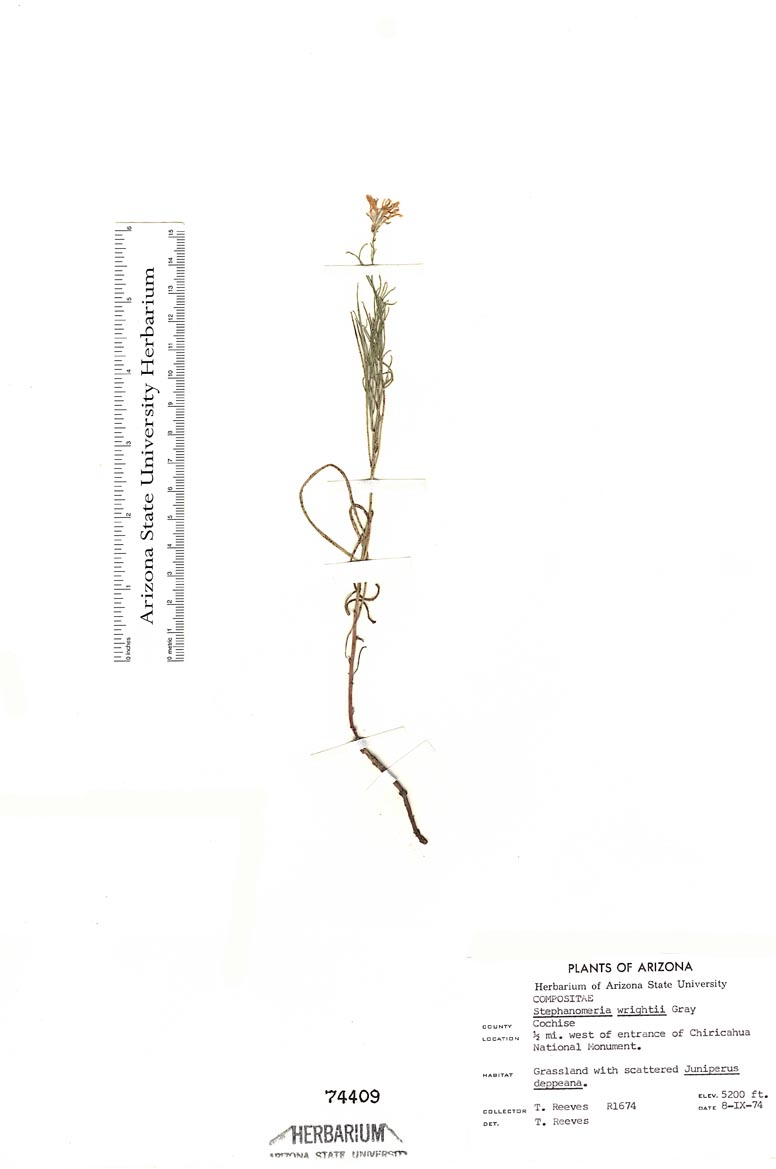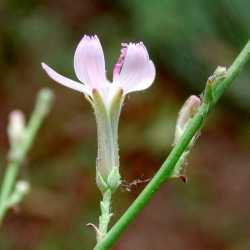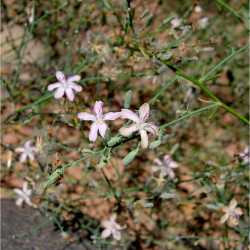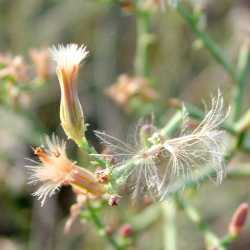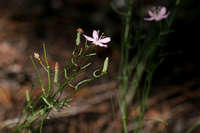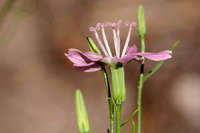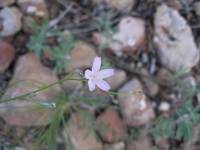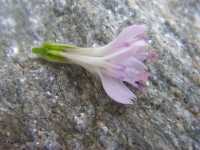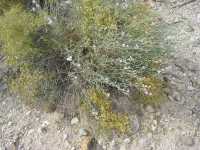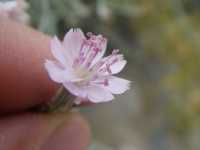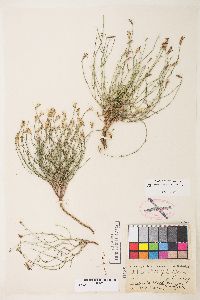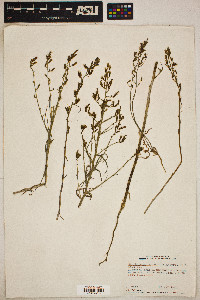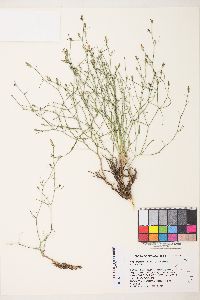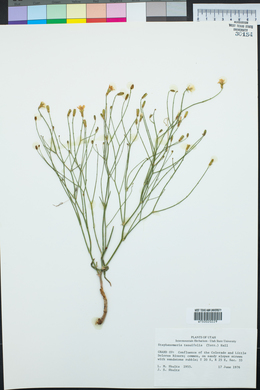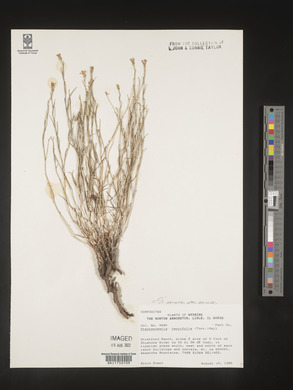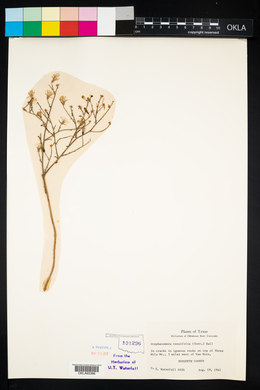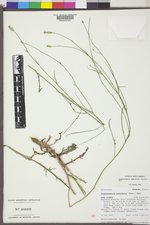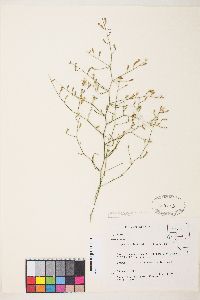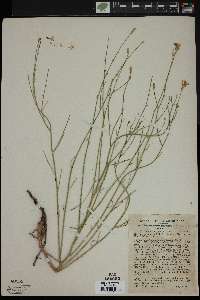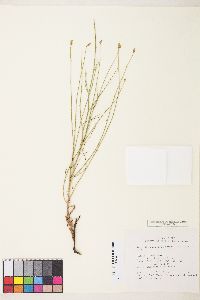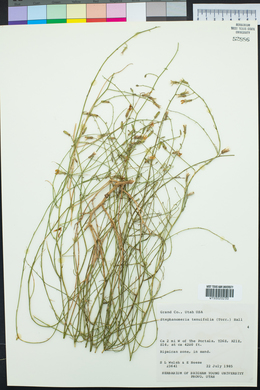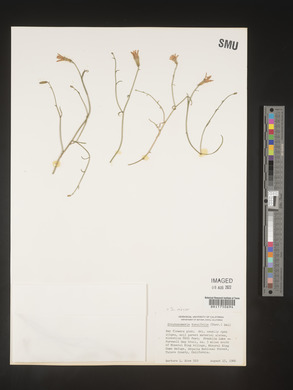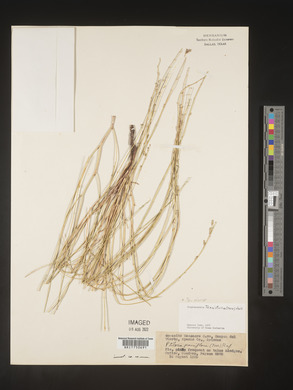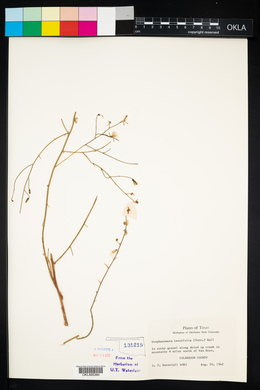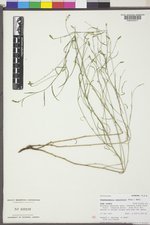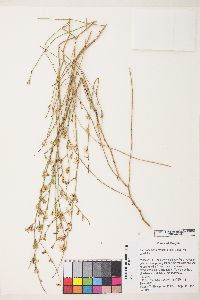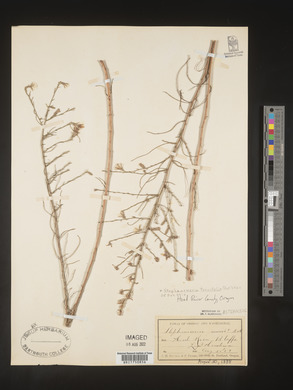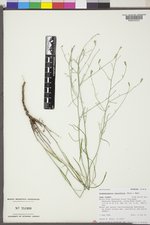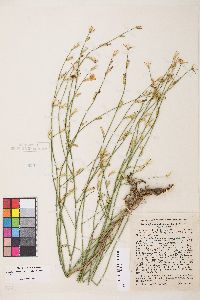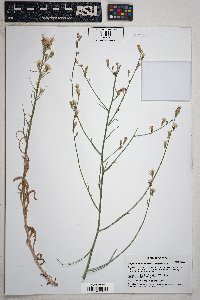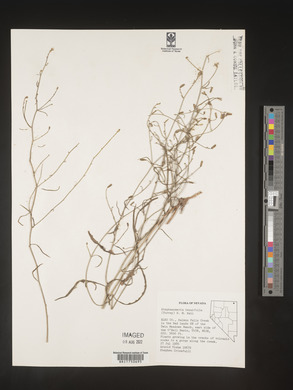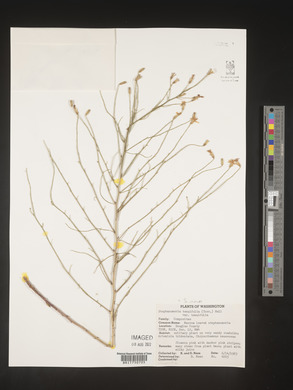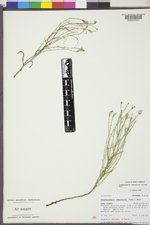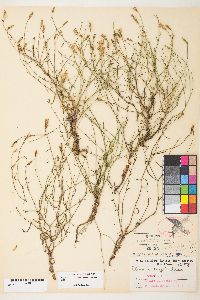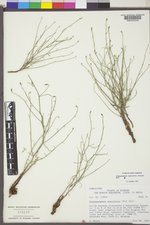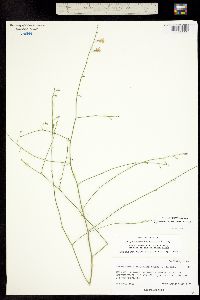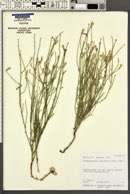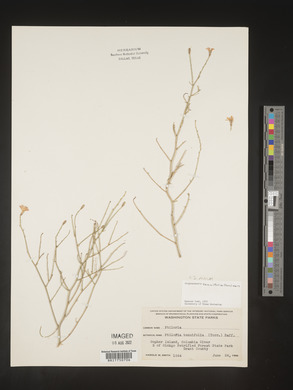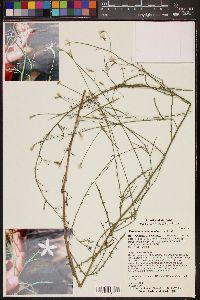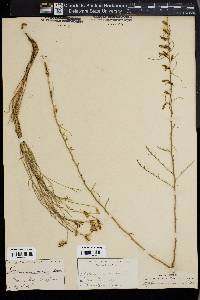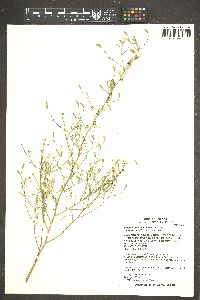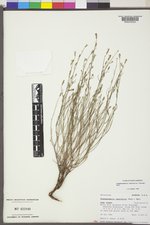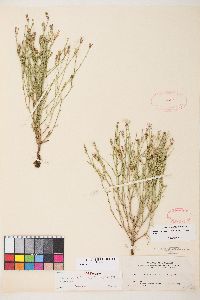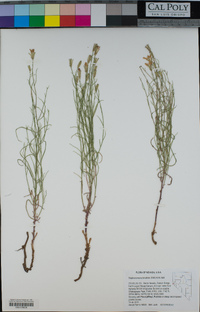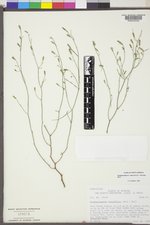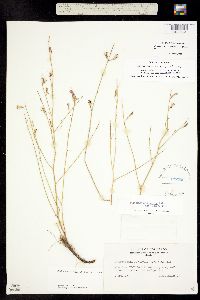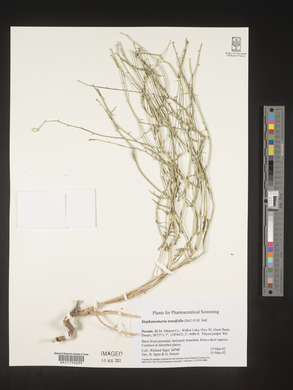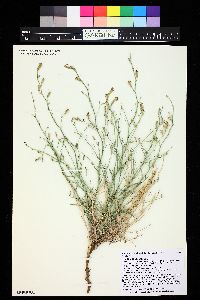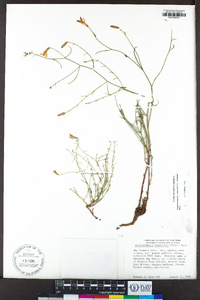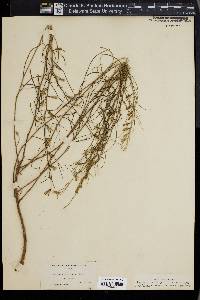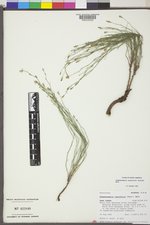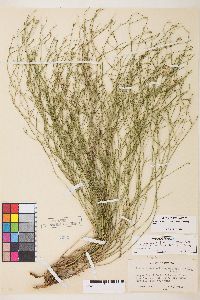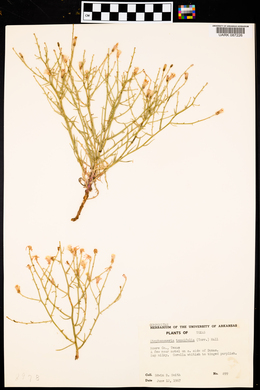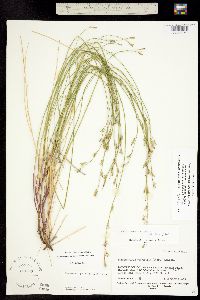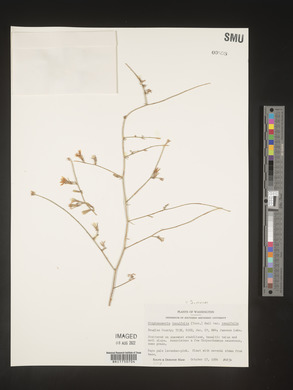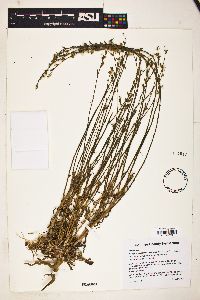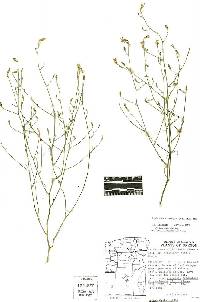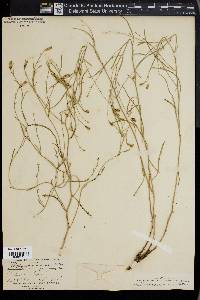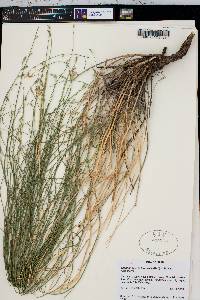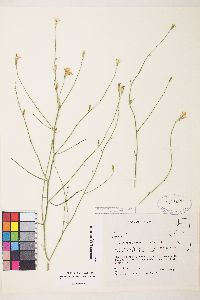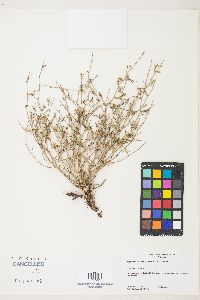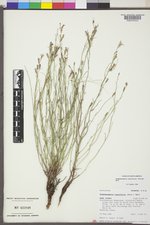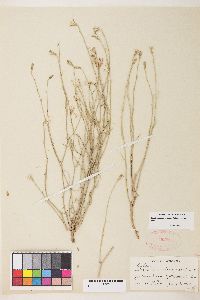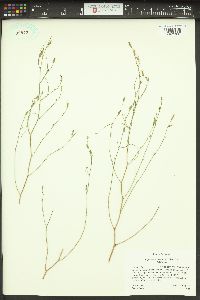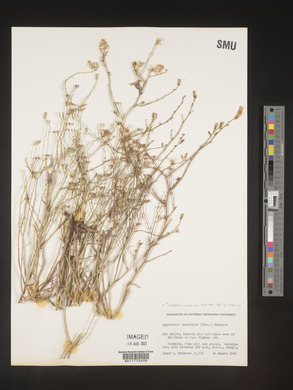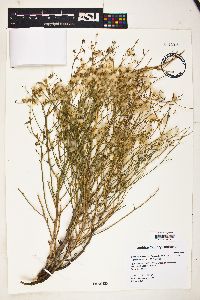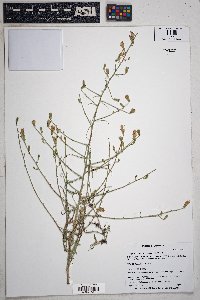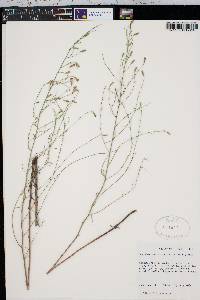Stephanomeria tenuifolia
|
|
|
|
Family: Asteraceae
Lesser Wire-Lettuce, more...lesser wirelettuce, narrowleaf wirelettuce
[Lygodesmia wrightii (A.Gray) Shinners, morePtiloria tenuifolia Raf., Stephanomeria minor (Hook.) Nutt., Stephanomeria minor var. minor , Stephanomeria minor var. myrioclada (D.C. Eaton) Kartesz, Stephanomeria minor var. uintaensis (Goodrich & S.L. Welsh) Kartesz, Stephanomeria minor var. uintensis (Goodrich & S.L. Welsh) Kartesz, Stephanomeria myrioclada D.C. Eaton, Stephanomeria tenuifolia var. myrioclada (D.C. Eaton) Cronquist, Stephanomeria wrightii Gray] |
Perennials, 20-70 cm (rhizomes stout). Stems 1-5+, erect to ascending, relatively densely to sparsely branched, glabrous. Leaves withered at flowering; basal blades linear to filiform, 5-8 cm, margins entire or toothed (teeth remote, faces glabrous). cauline much reduced, bractlike . Heads borne singly on branch tips. Peduncles 0, or 1-50+ mm (bracteolate). Calyculi of appressed bractlets. Involucres 5-14(-15) mm (phyllaries 5-6, glabrous). Florets 4-5(-6). Cypselae tan, 3-6 mm, faces smooth, grooved; pappi of 15-25, white bristles (persistent), wholly plumose. 2n = 16. Flowering Jun-Sep. Crevices in volcanic, granitic, and sandstone outcrops, open rocky ridges and slopes, bases of cliffs; 300-3000 m; B.C., Sask.; Ariz., Calif., Colo., Idaho, Mont., Nev., N.Mex., N.Dak., Oreg., Tex., Utah, Wash., Wyo.; nw Mexico. Stephanomeria tenuifolia is distributed over an immense region and is the most widespread species of the genus. It shows remarkable variability in the form and dimensions of its stems and branches. Plants described as S. myrioclada, from the northeasternmost corner of Nevada, present an architecture of relatively numerous, almost threadlike, densely crowded stems (1.5-4 dm) and branches with an irregularly dichotomous pattern. Continuous variation occurs from this form to another in the same region and elsewhere in which the stems are longer (3-7 dm), sparingly branched, and flexuous. The extreme variability in vegetative architecture may be adaptive and deserves further study. Stephanomeria wrightii was described from western Texas. The type sheet has three specimens, all with a single, slender stem with paniculately disposed branches from a broken-off stub. A. Gray (1884, 1886) stated that those features indicated the plants were 'seemingly biennial,' and distinguished them from S. minor Nuttall (an old synonym of S. tenuifolia), which he said has 'thick and tortuous roots.' The slender stem of the specimens received by Gray may indicate their young age; they do not seem distinctive because other specimens from the same region have the bright white, fully plumose pappi and other features ascribed to S. wrightii, but also exhibit large, thick rhizomes. Gray noted that the 'achenes are contracted under the summit'; this feature is not evident on the three specimens. Overall, S. wrightii does not seem different from S. tenuifolia. The type specimen of Stephanomeria neomexicana, originally described as Ptiloria neomexicana by E. L. Greene, from New Mexico, exhibits multiple, long, flexuous stems with relatively few branches emerging from a stout rhizome. The pappi consist of plumose bristles, but the proximal 0.5-l mm is only minutely barbed. Plants with similar pappi are found occasionally in New Mexico and Arizona and differ in no other respect from S. tenuifolia. Stephanomeria tenuifolia var. uintaensis grows 'in one small isolated stand' (S. Goodrich and S. L. Welsh 1983) and was recognized primarily on the basis of relatively long phyllaries (10-16 mm) and runcinate-pinnatifid basal leaves. I measured phyllary lengths on isotypes; only one, from a terminal head, was 16 mm; others varied from 11-14(-15) mm. Although the lengths are 2-3 mm longer FNA 2006, Wiggins 1964, Kearney and Peebles 1969, Heil et al. 2013, Allred and Ivey 2012 Duration: Perennial Nativity: Native Lifeform: Forb/Herb General: Glabrous perennial herb, 20-70 cm tall, from stout rhizomes and a thick, woody root crown; stems erect to ascending, freely branching into slender, nearly straight branchlets. Leaves: Basal and stem leaves all withered at flowering; basal leaves linear to filiform, 5-8 cm long, with entire or toothed margins; stem leaves much reduced, bractlike. Flowers: Flower heads pinkish and ligulate, on glandular peduncles, at branch tips or in clusters; involucres cylindric-conical, 7-11 mm tall, subtended by a calyculi of 4-7 linear-lanceolate bractlets; phyllaries 4-5 in 1-2 equal series, linear-lanceolate and usually puberulent; florets all ligulate (like ray florets but always bisexual), 4-5 per flower head, the ligules (ray petals) 5-7 mm long, slightly pinkish. Fruits: Achenes tan, 3-6 mm long, 5-ribbed; topped with a pappus of white plumose bristles, 5-6 mm long. Ecology: Found in riparian, hanging garden, and cliff habitats in pinyon-juniper, ponderosa pine, and Douglas fir communities, often on sandy soils, rock outcrops, or canyon bottoms, from 4,500-8,000 ft (1372-2438 m); flowers July-August. Distribution: British Columbia to Saskatchewan, south to TX, NM, AZ, CA, and MEX. Notes: The most widespread species in the genus. This is a highly variable plant and has a huge range. Similar to S. pauciflora but that species is more woody at the base; has glabrous peduncles (S. tenuifolia often has glandular peduncles); and the seeds have a tuft of brown bristles which are plumose on the upper 80% or so (S. tenuifolia seeds have a tuft of fully plumose white bristles). Ethnobotany: Used to treat snake bites and venereal diseases. Etymology: Stephanomeria is derived from Greek stephane, wreath or crown, and meros, division, referring to the pappus on the achenes; tenuifolia means slender-leaved. Synonyms: Stephanomeria minor, Ptiloria tenuifolia Editor: SBuckley 2010, AHazelton 2017 Plant: Subshrub usually <40 cm; herbage glabrous with milky sap Leaves: leaves alternate much-reduced above; deeply lobed to pinnatifid below Flowers: flowers all ligulate and equal in size, white to pink or rose; achenes columnar, 5-angled or 5-ribbed; pappus bristles plumose, bright white.. |
|
|
|

